NURSES MAKE A DIFFERENCE!
We Honor The Hard Work & Dedication Of Our Stratford VNA Nurses And Nurses Nationwide Who Lead, Excel, And Innovate In Our Healthcare Systems & Our Communities!
We Thank You & Salute You!
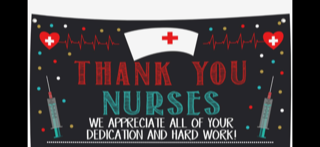




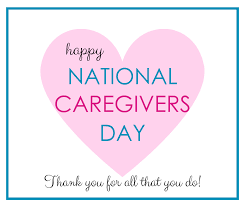
On National Caregiver’s Day we honor those who give endlessly to help our loved ones live better lives. A special thanks to our caregivers who help our elderly friends, family, and neighbors who require long-term care in home care, home health, and hospice.

AMERICAN HEART MONTH
Why do we observe American Heart Month every February? Well, every year more than 600,000 Americans die from heart disease. The number one cause of deaths for most groups, heart disease affects all ages, genders, and ethnicities. Risk factors include high cholesterol, high blood pressure, smoking, diabetes, and excessive alcohol use.
Do you know how to keep your heart healthy? You can take an active role in reducing your risk for heart disease by eating a healthy diet, engaging in physical activity, and managing your cholesterol and blood pressure. This is a great chance to start some heart-healthy habits!
HISTORY OF AMERICAN HEART MONTH
The human heart is responsible for pumping blood throughout our body, supplying oxygen and nutrients and removing toxins and waste. Weighing between 8 and 12 ounces, the heart is a mighty organ divided into four chambers that work together to pump blood in and out. The heart gets oxygenated blood from the lungs and pumps it throughout the rest of the body. It does this by contracting at a rhythmic pace, about 60-80 times per minute, thanks to electrical cells called “pacemakers.” When the heart ceases to perform its regular function, a medical device also called a pacemaker can be implanted to assist the heart.
Heart disease occurs when the arteries leading to the heart become clogged. Although heart disease has been around for thousands of years, we do know that many aspects of modern life exacerbate risk factors and make people more prone to heart disease and heart failure. Today, one in four deaths in the U.S. is attributable to heart disease. Heart disease can affect everyone, but taking stock of your prior health risks, activities and diet can help you reduce your risk.
Although we’ve learned a lot about how the heart works, there are still many unanswered questions about heart health and the cardiovascular system. As far as we know, the best way to protect your heart is to stay active, eat a healthy and balanced diet, and reduce your daily stress. To celebrate American Heart Month, take some time to learn about heart health risks, find your favorite heart-healthy activities, and cook some healthy meals with your family.
If you’re like us, you don’t need a reason to celebrate dark chocolate, but it sure is sweet to have one. National Dark Chocolate Day on February 1 is an opportunity exalt the health and happiness that dark chocolate brings and pay homage to the history and cultural significance surrounding this decadent treat.
5 FACTS ABOUT CHOCOLATE
Believed by the Aztecs to be a gift from Quetzalcoatl, the god of wisdom, chocolate was originally a fermented beverage that gave the drinker strength.
Chocolate is derived from the Aztec language of Nahuatl word “chocolātl” which means “bitter drink.”
Thanks to its high percentage of cocoa and lower amounts of sugar and milk, dark chocolate’s health benefits have made it a potential superfood.
About two-thirds of cocoa in the world is produced in Western Africa with the Ivory Coast being the largest source of the crop.
That’s over 11 pounds per person.
WHY WE LOVE NATIONAL DARK CHOCOLATE DAY
Potassium, zinc, magnesium, oh my! Dark chocolate contains vitamins and minerals that the body needs. It is also rich in powerful anti-oxidants called flavonoids that promote healthy circulation and prevents plaque formation in the arteries.
Dark chocolate contains tryptophan and phenylethylamine, two chemicals known to tell your brain to release pleasure causing endorphins. This feeling of euphoria is often compared with the feeling of being in love.
Chocolate’s low melting point makes it perfect for use in baking and there are tons of ways to incorporate the sweet treat. Whether you’ve got panache for ganache or freak out for fudge, break out that double boiler and get melting.

VALENTINE’S DAY 2022
Love is in the air on Valentine’s Day on February 14. Even though we believe that love should be spread and celebrated every day, we don’t always remember to do that. So on this dedicated day, go above and beyond in expressing your love for family, friends, and of course, your significant other.
HISTORY OF VALENTINE’S DAY
The believed origins is that it came from the feast for the patron saints named Valentine, by the Catholic Church during the in 496 AD. This was a way to over shadow and later replace the deemed brutal Pagan festival of Lupercalia. This festival was celebrated at the beginning of spring and paid homage to the Roman God of Agriculture, Faunus, on February 15. A goat and dog would be sacrificed symbolizing fertility and purity, respectively. This would then involve the hide of the goat being torn into strips, dipped in the sacrificial blood, and painted across the women and crops.
Despite there being many Valentines associated with the patron Saints Day, historians believe that the romanticized element of how Valentine’s Day is celebrated today came from a priest who was martyred by emperor Claudis II Gothicus in around 270 CE. Varying stories talk about different St Valentines with some saying one was marrying couples in secret to prevent men going off to war, another healed the blind, and the next wrote a message to his daughter signed ‘your Valentine’. There is also a possibility that they could be the same person!
It was during the 1400s that the day was associated with romance. Messages, or ‘Valentines’ as they were called, began to appear. Hand written letters and poems declaring affections of love became more and more popular. In the mid-1800s, Valentine’s cards began to be commercially produced and traditional gifts were candy and flowers, especially red roses symbolizing love and beauty.
Today, Valentine’s Day has become inclusive of friends and family to show how much you care and love them.
Valentine’s Day has a new meaning when you need an organ transplant to survive. 120,000 Americans currently waiting for precious organ transplants depend on the public to sign up with their state’s organ donor registries on National Donor Day every February 14. It’s a more concrete way to show love than giving heart-shaped candy, roses and red velvet teddy bears. By donating organs such as corneas, tissue, marrow, platelets and blood; you create a living legacy of your generosity with the ultimate gift of love.
WHY NATIONAL DONOR DAY IS IMPORTANT
National Donor Day was chosen as the perfect day for Americans to show their love for people waiting for organ transplants. On this day, the public is encouraged to help the many thousands of organ transplant patients by joining an organ donation registry. Did you know that as an organ donor you can save up to 8 people or heal more than 75 lives with your eye and tissue donation after you die? That’s an amazing way to express your love for humanity.
By joining a donor registry, you declare your intention to donate your organs, eyes or tissue right after you die. Sometimes families don’t always understand why donating organs is important, so once you decide to join a donor registry, discuss the decision with your family to ensure your last wish is honored. It’s also wise to put your wish in writing, instructing your family to provide information and documentation on your medical and social history. Being proactive today wisely prepares your family to follow through on your commitment without undue stress.
There are currently more people awaiting transplants than in years past. Unfortunately, there are many misconceptions about becoming a donor or joining a donor registry so it’s important to get the facts. For example, some people believe that certain illnesses or physical defects will keep you from being a donor which, with minor exceptions, is false. Other people think that physicians won’t try hard to save your life if they know you’re a donor, which discounts the number one priority for doctors — saving lives.
A VALENTINE’S DAY TREAT!
Chocolate Peanut Butter Cups with Sea Salt (Makes 20 Chocolate Cups)

Ingredients
Preparation
4. While the chocolate cools, roll 1 teaspoon of the peanut butter mixture into a ball and then flatten into a disk. Repeat with the rest of the peanut butter.
5. When the chocolate has cooled, place a peanut butter disk in each cup on top of the refrigerated chocolate mixture.
6. Top cups with the remaining melted chocolate to cover and finish with a few flakes of fleur de sel. Refrigerate until set.*
6. Peel the papers off and eat!
* Chocolate Cups can be kept refrigerated or at room temperature
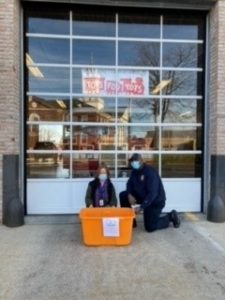
A big thank you to all who contributed to the Stratford VNA/Care Connection Toy Drive!
All donations were presented to the Stratford Fire Department to benefit Toys for Tots.
Thank you for helping to make the children of Stratford’s Holiday Season a little brighter!
WE ARE STRATFORD STRONG!
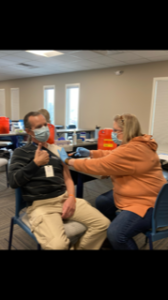
We would like to extend a big thank you to Bernie Bova, Leah Natter & the Stratford Health Department
for providing the Stratford VNA staff with the COVID-19 Booster! Thank you!
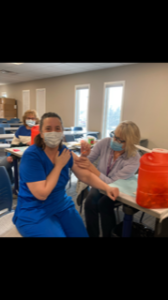


In The Spirit of Giving,
The Stratford VNA & Care Connection are holding a
TOYS FOR TOTS toy drive.
Please consider donating a new, unwrapped toy. Donations can be dropped off to the Stratford VNA & Care Connection address at 3060 Main Street in Stratford. A donation bin is located by our building’s back door.
All donations will be presented to The Stratford Fire Department.
Thank you for participating in this worthy cause, and making the boys & girls of Stratford’s Holiday Season a little brighter!
December 5th – 11th is National Handwashing Awareness Week
The History of National Handwashing Awareness Week
National Hand Washing Awareness Week is sponsored by the Henry the Hand Foundation, & reminds us to be vigilant about hand-washing, especially this time of year because it’s cold & flue season, and for COVID-19 preventative measures.
Why it’s More Important Than Ever
National Handwashing Awareness Week is celebrated during the first full week of December. The purpose of this observance was to educate people on the importance of good hand hygiene and the proper techniques to follow.
As important as handwashing has always been, it’s especially crucial now. Washing your hands regularly can help prevent the spread of respiratory viruses, including the novel coronavirus.
Why is Handwashing Important and How Does it Help Prevent the Spread of Infections?
Keeping your hands clean is one of the best things you can do for your health. Many diseases are spread by not washing the hands with soap and water. Additionally, respiratory viruses alone can be significantly reduced with proper handwashing. This is why all senior home care workers are educated on proper handwashing techniques.
Here are some of the reasons why washing hands is essential for good health.
Tips for Effective Handwashing
A quick rinse under warm water isn’t enough to get your hands clean. Here are five steps to follow EVERY time you wash your hands.
The best times to wash your hands are before, during and after preparing food, after using the toilet, before and after caring for someone who is sick and after blowing your nose, sneezing or coughing. If soap and water are not available, use a hand sanitizer that contains at least 60% alcohol.
Be Safe this Winter. Wash Your Hands!
Handwashing is an easy and effective way to protect yourself and others from germs and viruses. By taking the time to go through the five steps listed above, you can protect yourself and others from illnesses like COVID-19.
December 6th through 12th is National Influenza Vaccination Week (N.I.V.W.)
The History of National Influenza Vaccination week
Has any of your grandparents ever mentioned the Spanish Flu? Also known as the 1918 Influenza pandemic, the Spanish Flu was one of the deadliest flu outbreaks in human history. Caused by the H1 N1 influenza virus, the disease spread across the globe, toward the end of World War I. The earliest case of the flu was detected in military personnel in Kansas, March 1918. The Spanish flu infected almost one-third of the world’s population, in four successive waves. It recorded a high death toll, ranging from 25-50 million worldwide, killing 675,000 people in the U.S. alone. The high mortality rate among young adults, between the ages of 20 and 40, was a remarkable feature of the influenza pandemic. Although vaccination against influenza began in the 1930s, it was only until 1945 that it saw widespread availability among civilians in America. One of the lead researchers of this vaccine was Dr. Jonas Salk, who is best known for developing the polio vaccine in the 1950s. The U.S. still witnesses tens of thousands of deaths caused by influenza each year. Flu can affect anyone, but those at a higher risk are the aged (65+), little children, pregnant women, and people with chronic illnesses. An infected person can pass it to someone at a high risk of severe illness, including babies younger than 6 months, who are too young to get a flu vaccine. To prevent this spread, the Advisory Committee of C.D.C. urges every individual to get vaccinated, including people in good health.
Why it’s More Important Than Ever in 2021 National Influenza Vaccination Week (N.I.V.W.) is observed December 6 through 12 as a reminder for you to stay protected in the upcoming winter months. If you haven’t already taken your vaccination shot, it’s not too late. The season for flu can be unpredictable; it can begin as early as fall and last up to spring. Conventionally, flu activity is at its peak during winter, and so public healthcare professionals, advocates, and communities join hands to promote flu vaccination. The flu can cause serious health complications, such as bacterial infections or pneumonia, and can get you admitted to a hospital. If not treated at the right time, the flu can even lead to death. To prevent such mishaps and to raise awareness, the Centers for Disease Control and Prevention (C.D.C.) created N.I.V.W. in 2005.
5-Ingredient Holiday Peppermint Bark
(Recipe Provided by allrecipes)

This layered peppermint bark is a delectable blend of semisweet chocolate, white chocolate, and peppermint. Semisweet, milk chocolate, or dark chocolate can be used.
Prep:
20 mins
Cook:
10 mins
Additional:
2 hrs
Total:
2 hrs 30 mins
Servings:
20
Yield:
1 1/4 pounds
Ingredients
Ingredient Checklist
Directions
Instructions Checklist
Lightly grease a 9×9 inch pan and line with waxed paper, smoothing out wrinkles; set aside.
Place the semisweet chocolate and 1 teaspoon of the canola oil in the top of a double boiler over just barely simmering water, stirring frequently and scraping down the sides with a rubber spatula to avoid scorching. When the chocolate is melted, stir in 1/4 teaspoon of the peppermint extract.
Pour the melted chocolate into the prepared pan, and spread evenly over the bottom of the pan. Sprinkle half of the crushed peppermints over the chocolate layer. Refrigerate until completely hardened, about 1 hour.
Place the white chocolate and the remaining 1 teaspoon canola oil in the top of a double boiler over just barely simmering water, stirring frequently and scraping down the sides with a rubber spatula to avoid scorching. When the chocolate is melted, stir in the remaining 1/4 teaspoon peppermint extract.
Pour the white chocolate directly over the semisweet chocolate layer; spread evenly. Sprinkle the remaining crushed candy over the top and gently press in. Refrigerate until completely hardened. Remove from pan; break into small pieces to serve.
Nutrition Facts
Per Serving: 190 calories; protein 1.5g; carbohydrates 30.3g; fat 7.7g; cholesterol 2.4mg; sodium 17.2mg.

In The Spirit of Giving,
The Stratford VNA & Care Connection are holding a
TOYS FOR TOTS toy drive.
Please consider donating a new, unwrapped toy.
Donations can be dropped off to the Stratford VNA/Care Connection location at 3060 Main Street in Stratford.
All donations will be presented to The Stratford Fire Department.
Thank you for participating in this worthy cause, and making the boys & girls of Stratford’s Holiday Season a little brighter!
We are humbled to be recognized for Top Workplaces 3 years in a row. Our staff works incredibly hard to make a difference in people’s lives. Home care is one of the fastest growing health care segments in the U.S. and the Stratford VNA has been working in this sector since 1919.